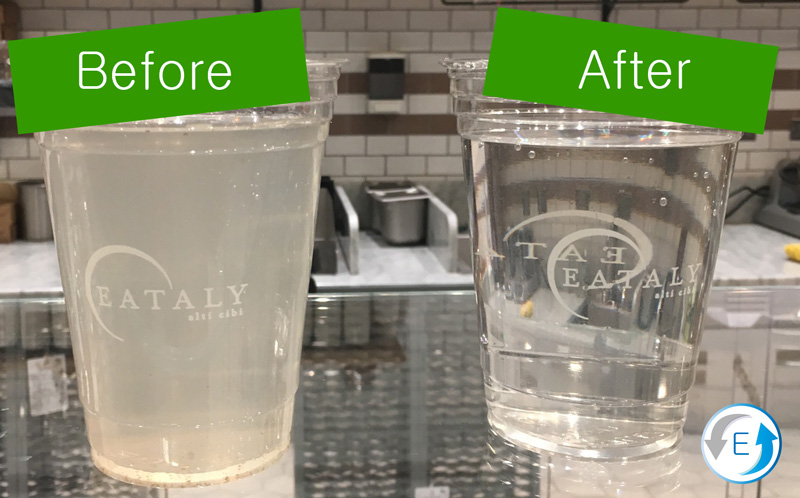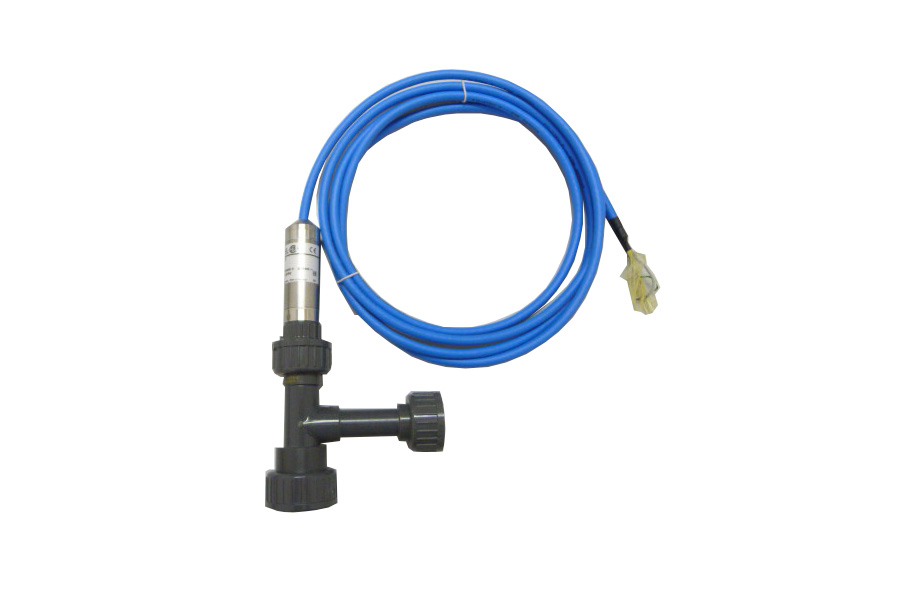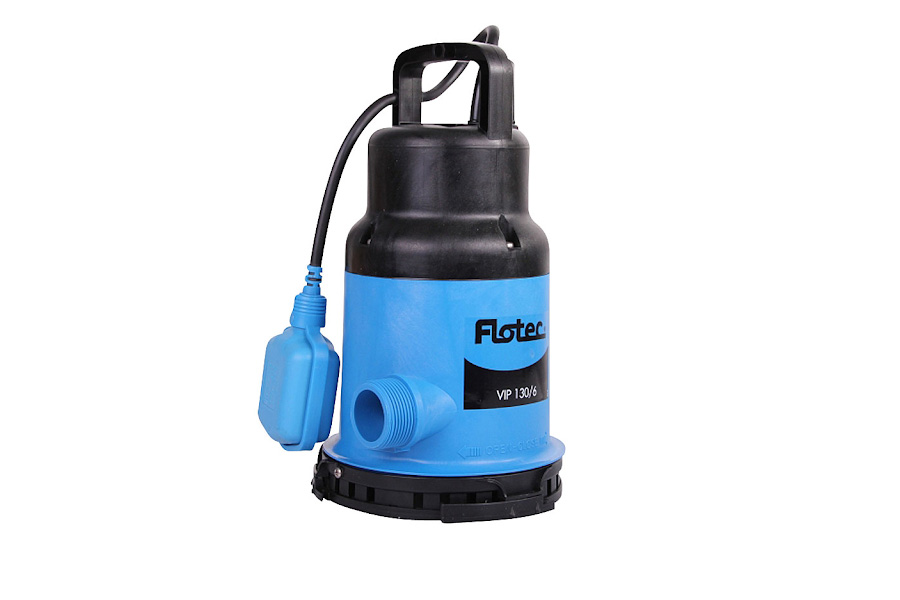
Eataly Restaurant L.A uses Aqualoop to meet 33% of the restaurant’s toilet flushing water demand.
Aqualoop
Commercial Greywater Recycling Systems
The only greywater system tested and certified by NSF international to the NSF 350C standard for commercial and residential applications.
Make your new commercial property more eco-friendly and water-efficient by installing a greywater recycling system. Greywater systems recycle water from showers, baths, and bathroom sinks for use in non-potable water applications. Not only does this reduce the total amount of water your facility consumes and discharges to the sewer, but it also showcases your brand’s commitment to environmentally conscious practices. Learn more about the value of installing a greywater system.
AQUALOOP processes water from virtually any source, but it shines in its application with greywater recycling for non-potable uses. Its patented MB-MBR ultra-filter removes 99.9999% bacteria (6 Log) and 99.77% viruses (3 Log), providing excellent water quality.
- Greywater from showers, laundry, and bathroom sinks
- Rainwater from any rooftop
- Other surface waters – lakes, rivers, ponds
- Primary wastewater plant discharge.
The system can be scaled to any capacity and the components can be assembled as required or delivered in a packaged solution, offering flexibility to ensure the best results in every situation.
AQUALOOP can be scaled to any capacity from a large 20,000 gallon per day commercial or industrial application down to a 50 gallon per day single family residential system.
AQUALOOP Greywater Treatment Technology
The Aqualoop greywater treatment technology is a moving bed-membrane bioreactor MB-MBR which sounds very high tech and complicated. Let’s break it down. It is not that complicated.
NSF 350 Certification


AQUALOOP
Grey Water Recycling System
Benefits Include
- NSF 350 Certified for grey water recycling
- Rainwater and surface water treatment for potable water use
- Scalable to any size
- Low maintenance
Technical PDF Downloads
- Certifications Reports
- Drawings
- Installation and User Manual
- Planning Sheet
- Product Brochure
- Product Specifications CUT sheets
Product Article Numbers
- Aqualoop single membrane station: 230006
- Standard membrane station: 230005
- Cartridges: 230010
- Growth media: 230025
- Purain pre-filter: 210175
ADVANTAGES
- Certified NSF 350C treating bath and laundry greywater.
- Great water quality for non-potable use: toilet flushing, spray irrigation and cooling towers.
- The lowest possible maintenance: more than 6 months with zero maintenance.
- Ability to store treated water for extended periods.
- Easier permitting.
- Disinfection is achieved through the membrane. NO additional disinfection needed for NSF 350C water quality.
- No bag filter changes.
- No toxic chlorine and associated chemical handling.
- No UV bulb changes.
- Simple rainwater and surface water treatment for potable water
applications. - Patented, low maintenance membrane cartridge technology with 0.02 micron ultra-filtration.
- Design is flexible for any capacity and any style tank with easy customization and standardized packages.
Aqualoop Accessories
Aqualoop Membrane Station
With System Control
Scalable Water Recycling
The AQUALOOP membrane station holding the membrane cartridges is mounted inside the bioreactor tank. A transfer pump, backflush pump, and aeration connection are all integrated.
The AQUALOOP membrane station holds up to six membranes. Multiple AQUALOOP membranes stations are used to scale to any capacity. A central controller manages aeration, filtration, and tank levels.



Aeration
- In addition to critical aeration for biological growth, the blower also keeps the membranes clean.
- The blower operation is run at maximum energy efficiency and optimal treatment level with less than 2 KWH per 1000 gallons of treated water.
Tanks
AQUALOOP pre-filter and AQUALOOP membrane station can be integrated into almost any style tank:
- Above ground or below
- HDPE, Fiberglass, Concrete, Steel

Greywater Recycling With Aqualoop
The Aqualoop greywater treatment technology is a moving bed-membrane bioreactor MB-MBR which sounds very high tech and complicated. Let’s break it down. It is not that complicated.

Step 1: Pre-filter
The AQUALOOP pre-filter is self-cleaning and keeps hair, lint and other debris out of the process. The filter is showered off to flush these contaminants down the drain. Filters are sized for flow up to any size building.
Step 2 – Biological Treatment
How this step works:
For greywater treatment, biological treatment breaks down organics. For rainwater and surface water treatment, we skip this step to still achieve drinking water standards.

Step 3 – Ultra-filtration
Patented AQUALOOP membrane cartridges are the core of the water treatment process and the Aqualoop advantage. The membrane’s special hollow fibers are designed to effectively exclude bacteria and viruses from passing to the NSF 350 treated water tank. The ultrafiltration membrane has an effective pore size of 0.02-microns to remove contaminants with 6 log reduction of bacteria (99.9999%) and 99.7% (almost 3 log) virus removal. Click Here for details. The membranes stay clean extra long with built-in backwash controls and air scouring.
AQUALOOP can improve the water quality without chemical additives such as chlorine, which has proven hazardous to health (to say the least!). It is a known carcinogen.
AQUALOOP’s special cartridge and membrane design allows for a long service life of up to 10 years with only minimal maintenance.
That’s it! Pre-filter, aerate, and filter. There is no additional treatment necessary to assure NSF 350 (C) quality water. This is how we can minimize maintenance time and cost.


What Is Greywater?
Greywater is a category of gently used water that, while it does have some contaminants or debris in it, is easier to clean to a safe non-potable standard. For example, greywater can come from bathroom sinks, washing machines, baths, or showers. Without a greywater system, the water will pass through to the municipal sanitary sewer system along with the wastewater stream, where it’s heavily treated and reintroduced to the environment. Recycling greywater takes it out of the wastewater discharge stream and reduces freshwater demand.
We consider the following general categories of water:
- Potable water: This category is sourced from any of the categories below. It is treated either by nature (like rainwater and groundwater) or by humans to reach a water quality level good enough to drink.
- Greywater: This is as described above (lightly contaminated water from inside a building).
- Black water: Black water, typically from toilets and kitchens, contains higher levels of pathogens, organics, and other contaminants than greywater. While it can and is used onsite typically for non-potable uses, treatment requirements are higher.
- Precipitation: This water source sustains the earth, watering plants and filling surface water and groundwater supplies. When it touches a surface, we call it stormwater. Rainwater is stormwater from a rooftop and is very clean and often potable. All stormwater is easily treated for non-potable use. Rainwater is easily treated for potable use, either by nature or humans.
- Industrial water: This is water contaminated through industrial processes. The range of water quality is highly varied and not a topic for this article.
- Saltwater: Most of the earth’s water (>97%!) resides in saltwater. It is desalinized by nature through evaporation and rainfall or by humans using energy-intensive processes.
Up to about 40% of the water used in single-family homes and commercial-scale buildings can be recycled as greywater, so adopting residential greywater systems (especially in multi-family residential and hotel properties) or commercial (offices) greywater recycling systems has a major impact on water management for properties and can be a great investment.
What Are Commercial Greywater Recycling Systems Used For?
Commercial greywater recycling systems route lightly used greywater in non-potable water contexts, such as flushing a toilet or watering the lawn. Typically, greywater is routed straight to the septic tank or municipal sanitary sewer system. But with a properly installed greywater system, water from bathtubs, showers, clothes washers, and bathroom sinks is rerouted to a treatment system. Then, the water gets pumped to any non-potable use such as:
- Toilet flushing
- Landscape irrigation
- Cooling tower makeup
- Car washing
- Laundry
Greywater systems have a range of capabilities. On the low-end, basic greywater systems simply capture greywater for immediate use without treatment, called laundry-to-landscape. Higher-end systems are fully automated and treat water to a safe level for non-potable use. They can integrate with your building’s piping for a much wider variety of uses.
Why Are Commercial Scale Greywater Recycling Systems So Important?
Commercial greywater systems are an excellent addition to virtually any commercial construction project. Some of the benefits building owners will see are:
- Reduced water consumption overall
- Reduced water discharge (both wastewater and stormwater)
- Less impact on the local water table, which can be jeopardized by large industrial, residential, or commercial consumption
- Meet local codes for onsite water use and reduction in consumption and discharge
- Qualify for incentives such as building density bonuses, grants, and tax advantages
- Achieve excellent brand reputation for developing and using more sustainable processes through certification in programs such as LEED and LBC
- Qualify for access to grants or tax credits depending on your facility’s location
- Smaller water bills due to on-site water collection
- Increase property resale value
Recycling greywater reduces operational expenses for your business and makes your property and business more appealing.
Are You Interested in Purchasing a Commercial Greywater Recycling System? Contact Us Today!
Ecovie Water Management is committed to helping property owners transition to more water-efficient systems. Our greywater recycling systems are built to meet each client’s needs and provide easy, long-lasting recycling options. Contact us today to learn more or to start designing your commercial greywater system.






